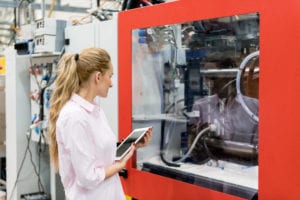Recently I’ve been thinking a lot about innovation. We hear this term constantly, not only in process automation, my area of expertise, but also across all of industry. Industrial automation suppliers are always looking for new and innovative ways to solve problems such as: improve efficiency, become more sustainable, reduce costs, and the list goes on.

As an offer manager, I often hear the following from my colleagues: We need X feature because the customer asked for it. I’m glad that we are listening to our customers but stopping there essentially places the first phase of innovation in the customers’ hands. The customer has already analyzed the overall problem and thought about how best to solve it. In this scenario, the customer defines the need. We listen to them and work to address the need.
I’ve also seen vendors create business solutions that solve a specific problem on their own. While this seems perfectly reasonable, this unilateral development process is limiting. Just like when customers define the problem themselves, when suppliers define the problem, solutions are narrow and address only that one need. This blocks the potential for opportunistic gains.
Similar to the way that systems in an operation become rigid when they work as silos, so does the innovation process. Co-innovation, between vendors and customers, and even vendors with other vendors, is what it takes to advance in an Industry 4.0 world.
So how does real innovation happen? How do we break free of our narrow definitions of progress and make real, impactful change?
Understanding Industry 4.0
Co-innovation starts with how we listen. When summarizing customers by their job function or role, I’ve noticed we tend to assume these generalized needs:
- As an engineer, I need insights and analyses into my plant operations.
- As an operator, I need my plant to run efficiently and safely for optimal output.
- As a maintenance technician, I need to anticipate and address issues before a problem occurs.
While these statements can provide some context, they leave room for interpretation. What are the problems this person deals with (as opposed to the fundamental job requirements)? Open and probing questions can help uncover the true underlying needs. Where in your industrial plant do you see the lowest performance? Do you need help finding out? What are the expectations for your department’s material output? What is holding you back from achieving those goals? If you could wave a magic wand, what would you wish for?
It takes a sense of curiosity to not just identify but also quantify any action to take. Asking exploratory questions to customers often divulges the true origin of their problems:
- If a customer says they want to reduce the amount of downtime occurrences at their plant, a discussion may unveil that the facility has under-served, legacy systems that need migration or modernization.
- If a customer says they want to increase the number of end-products their plant produces, an open discussion between supplier and customer can recognize where in their facility they need to incorporate AI or data analytics for optimal monitoring, integrate new technologies to increase flexibility and productivity, or improve personnel training due to human error in the plant lifecycle.
Now, if we approach this differently and ask the customer discovery questions to understand the actual problem they are trying to solve, we can achieve co-innovation and identify solutions to resolve the immediate challenge and then some.
Over the past few months, I’ve been having these deeper conversations with our customers to go beyond generalizations and assumptions. My purpose is to explore, understand, document, and fully reveal their underlying goals. What I’ve found is that thoughtful and comprehensive conversations lead to greater collaboration. And collaboration leads to the kind of co-innovation that delights and surprises all of us.
Next generation industrial automation
This exploratory approach has proven beneficial to the whole Schneider Electric ecosystem. Many of our innovations are the result of close co-innovation with our customers, partners, and the greater marketplace.
For instance, we have applied this practice to our EcoStruxure™ Automation Expert offer from the ground up. EcoStruxure Automation Expert is a software-centric industrial automation system that creates step-change improvements throughout a company’s complete operational lifecycle. It is built on the concept of universal automation for open, portable, and interoperable automation.
EcoStruxure Automation Expert rethinks the engineering process by taking a software-centric approach that:
- Automates low-value engineering tasks so engineers are free to innovate and focus on high-value add
- Enables efficient migration of automation objects to ensure you can make the most of what you already have and easily update and upgrade when you want
- Provides rapid agility to process changes
- Decouples hardware from software, so you can design and reconfigure processes on the fly
- Bridges the divide between IT and OT systems so you can fully leverage modern advancements, such as artificial intelligence, machine learning, digital twin, and predictive maintenance
Our customers are calling EcoStruxure Automation Expert “a game changer.”
So, how did we co-create this innovative next generation automation solution?
It takes an ecosystem
By identifying the need for a next-generation system—based off foresight and conversations with leading customers in energy-intensive industries—we tested and imagined what would be the ideal solution. Understating that we are now in era of miniaturization and massive data, we knew that we now have the computational power and communication bandwidth to achieve the previously impossible.
Unfortunately, over the years, this increase of computational power, AI, and the speed of technology progression led us to an increase of the complexity of our automation systems to keep up. It became clear that current industrial automation system architecture has done a good job of advancing industry to where we are today, but to fully leverage digital innovation, we need to fundamentally change our technology model. And we need co-innovation to get there.
So, with a clean slate and a fresh eye, we looked at every aspect of automation. We asked our customers and partners: What if we could design the ideal automation system from scratch? What does the next quantum leap for industrial automation look like?
The market already was asking for open systems, but it was clear that open wasn’t enough. Modern industrial enterprises need solutions that are interoperable. They need flexibility and efficiency we could only dream of a decade ago. We saw the way that computers and peripherals in the IT world could just plug together and work—regardless of brand.
Explore UniversalAutomation.org
Because we believe in the power of co-innovation and collaboration so much, we launched the world’s first universal automation solution in 2020. Not long after, vendors, users, and higher education institutions from across industry stood up and said, “I want to advance industrial automation, too.” Together, we established a non-profit, independent association called UniversalAutomation.org. As one of the pioneer members, Schneider Electric will donate our reference implementation of the IEC61499-based runtime used in EcoStruxure Automation Expert to the association. For the first time, industrial enterprises will share a common automation software layer across their products and solutions—regardless of brand. That’s co-innovation.
Co-innovation helps us solve everyday problems, expose vulnerabilities, and even bring us to unexpected places. Because, when it comes to Industry 4.0, no one can do it alone.
To hear more ideas around co-innovation, discover our Schneider Electric blog site. To join a community of industrial automation innovators, visit Schneider Electric Exchange.



